Victorian Fountain Pens
Victorian Fountain Pens
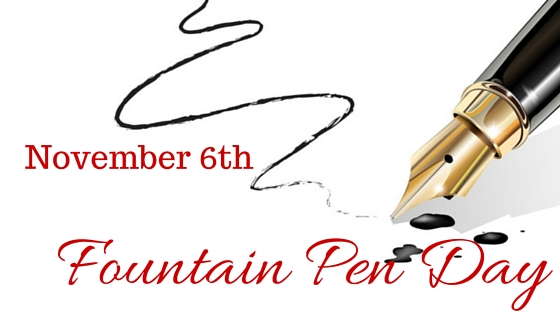
Did you know?
Taking place on the first Friday in November each year, Fountain Pen Day is celebrated by enthusiasts worldwide as a time to embrace, promote, and share the use of fountain pens. Victorian Fountain Pens.
.
.
Fountain Pen Day
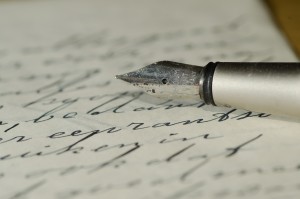
.
Fountain Pen Day has its own Facebook Event Page. Apparently it’s a big deal. Victorian Fountain Pens.
.
Fountain Pen Details
…A fountain pen is a nib pen that, unlike its predecessor, the dip pen, contains an internal reservoir of water-based liquid ink. The pen draws ink from the reservoir, through a feed, to the nib and deposits it on paper via a combination of gravity and capillary action.
.
Many patents were issued in the mid-19th century to various inventors.
![Kristin Holt | Victorian Fountain Pen Patent Drawing from 1867. [Image: Public Domain] Kristin Holt | Victorian Fountain Pen Patent Drawing from 1867. [Image: Public Domain]. Related to Victorian Fountain Pens.](https://www.kristinholt.com/wp-content/uploads/2015/09/Fountain-Pen-Patent-Drawing-1867.-Public-Domain-image-259x300.png)
Fountain Pen Patent Drawing from 1867. [Image: Public Domain]
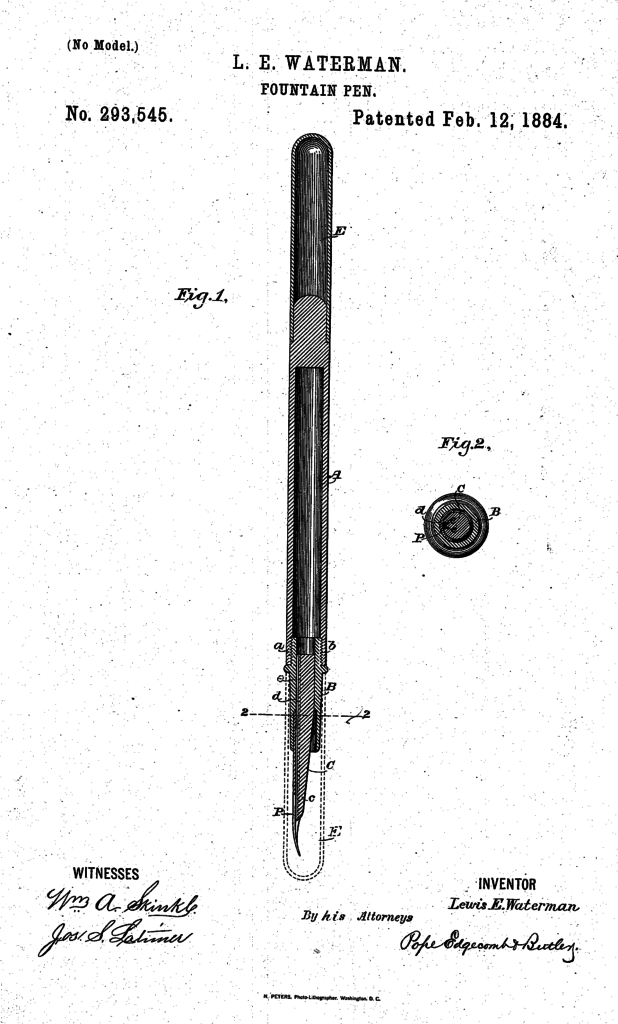
Fountain Pen, U.S. Patent No. 283,545, awarded February 12, 1887.
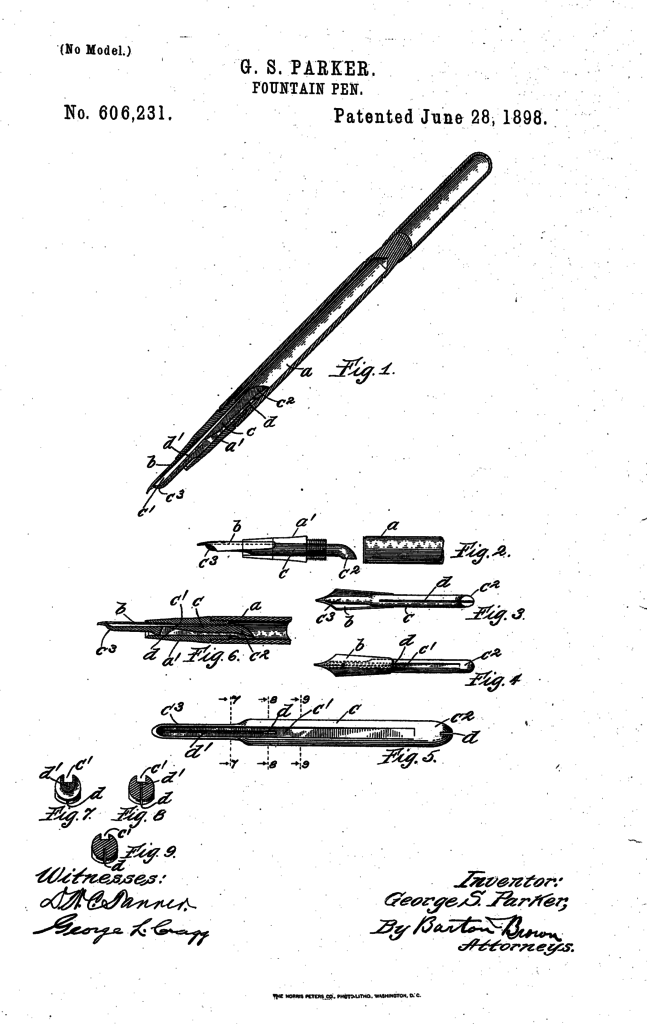
.
Pens with reservoirs have been available since the 17th century. (Perhaps as early as 10th century AD.) The process of developing a reliable pen was slow-going. The role that air-pressure played in the operation of ink-filled pens wasn’t well understood. By the mid-19th century inventors had worked out a pen that could withstand highly corrosive ink. Also, they’d corrected leakage and sediment in ink. Lastly, they’d worked around the mess of refilling pen reservoirs with an eyedropper.
Mass production of durable pen nibs and ink reservoirs brought costs down. Once sold at an affordable price, pens became available to those who previously couldn’t afford to write. Thus, the popular fountain pen encouraged the development of education and literacy.
By the late 19th century fountain pens had become common place. Pens proved effective and beautiful writing implements. This success was a result of three key inventions: iridium-tipped gold nib, hard rubber, and free-flowing ink.
.
Why are fountain pens popular now?
Fountain pens seem hopelessly geeky to the uninitiated. Why bother with an expensive, finicky pen when most of us do all of our writing on keyboards and touchscreens anyway? And what’s wrong with a ballpoint?
.
But there are significant advantages to using one, other than it looking beautiful on your desk. Writing longhand is not only more pleasant, since you don’t have to exert as much pressure on the page, but also more thoughtful. Because you’re using a lighter grip, it’s easier to add your own unique touch to your script. Fountain pens are also more environmentally friendly — the same pen can be used for a lifetime instead of joining the other cheap ballpoints in the trash year after year.
.
.
They’re apparently cool. Or hot. Whichever term currently means stylish, hip, and contemporary. Ed Jelley argued 8 Reasons Why You Should Write With a Fountain Pen. My favorite: improved penmanship.
.
Spencerian Penmanship
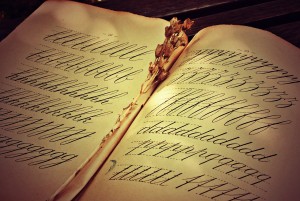
As an author of historical romance, I often find myself immersed in census records (and others) from the 19th century, researching everything from occupations to names actually given babies in certain eras and regions of the country to taxes paid or values affixed to property and reasons doctors gave for deaths. I’ve had to work at deciphering 19th-century handwriting. It’s not as easy as it might seem.
![Kristin Holt | Spencer's Book on Penmanship, published 1866 [Image: Public Domain] Kristin Holt | Spencer's Book on Penmanship, published 1866 [Image: Public Domain]. Related to Victorian Fountain Pens. Related to Victorian Fountain Pens.](https://www.kristinholt.com/wp-content/uploads/2015/11/Spencer-book-public-domain.jpg)
Spencer’s Book on Penmanship, published 1866 [Image: Public Domain]
Some resources have made it easier, such as the Spencerian Penmanship books. Spencerian Script is a script (or penmanship) style used in the United States from approximately 1850 to 1925 and was considered the American standard for business correspondence prior to the widespread adoption of the typewriter. Spencer’s Book on Penmanship was published in 1866.
The image, below, is a surviving sample of Spencerian penmanship. It’s gorgeous! Flowing text reminds me of my grandmother’s and grandfather’s handwriting. Quality penmanship seems to be something of a bygone era. My grandmother taught fifth grade, and emphasized penmanship with her students.
Perhaps there are solid reasons beyond fondness for all things Victorian to enjoy fountain pens. No wonder someone set aside one day each year (November 6th) as Fountain Pen Day.
I’m fond of fountain pens, Spencerian script, and quality penmanship. Thus I gave my Salt Lake City Readers Luncheon guests a fountain pen and a Spencerian Copybook (practice).
![Kristin Holt | Enduring example, twenty years after Platt Rogers Spencer's death, of Spencerian script from December, 1884. [Image: Public Domain] Kristin Holt | Enduring example, twenty years after Platt Rogers Spencer's death, of Spencerian script from December, 1884. [Image: Public Domain] Related to Victorian Fountain Pens.](https://www.kristinholt.com/wp-content/uploads/2015/11/Spencerian_example-617x1024.jpg)
Enduring example, twenty years after Platt Rogers Spencer’s death, of Spencerian script from December, 1884. [Image: Public Domain]
Notice the heavier strokes in the D in Dec (top line) and the lower curve of the S in “Dear Sir.” Both were accomplished with the flexible fountain pen nib.
.
.
Related Articles
.
Updated June 2019
Copyright © 2015 Kristin Holt LC

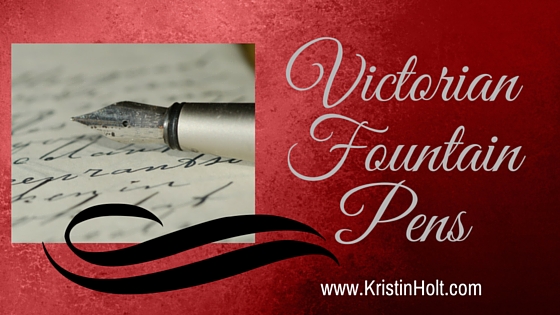


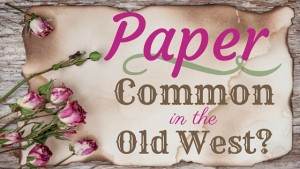












A nice article. I was looking at some history for the fountain pens and this one portrayed an impression.
Thanks for stopping by, Royaline, and for sharing your interest in fountain pens. Thanks for your kind comments.
Kristin